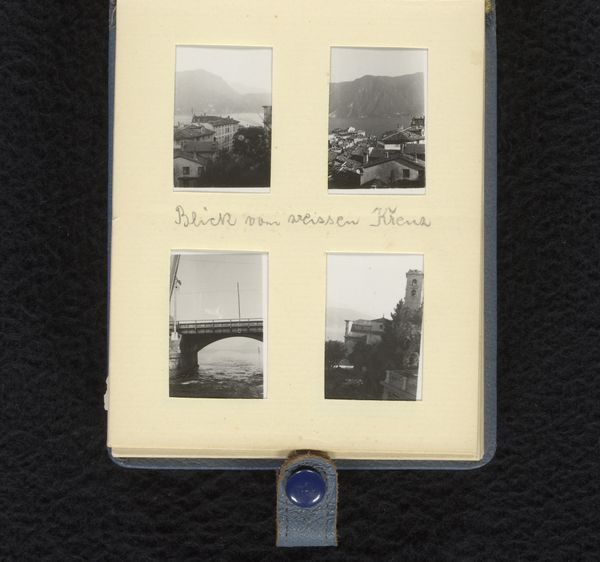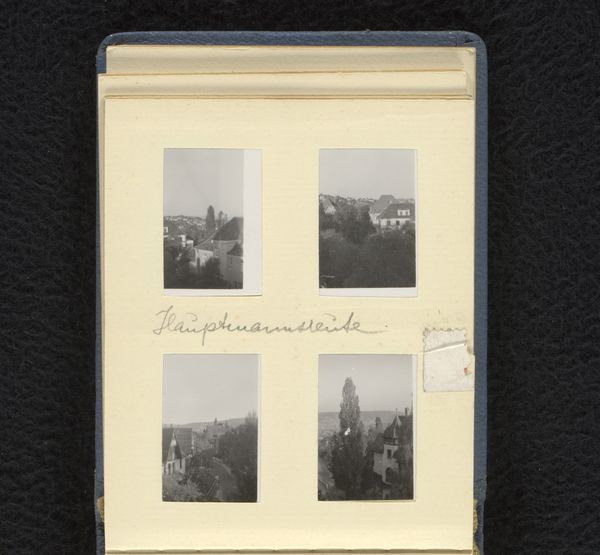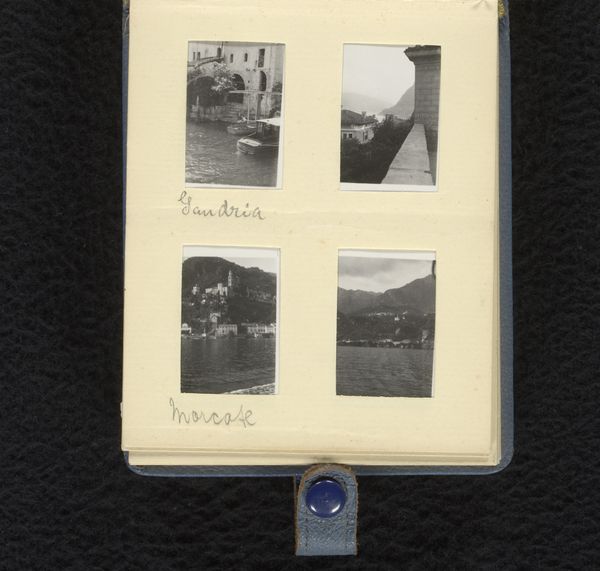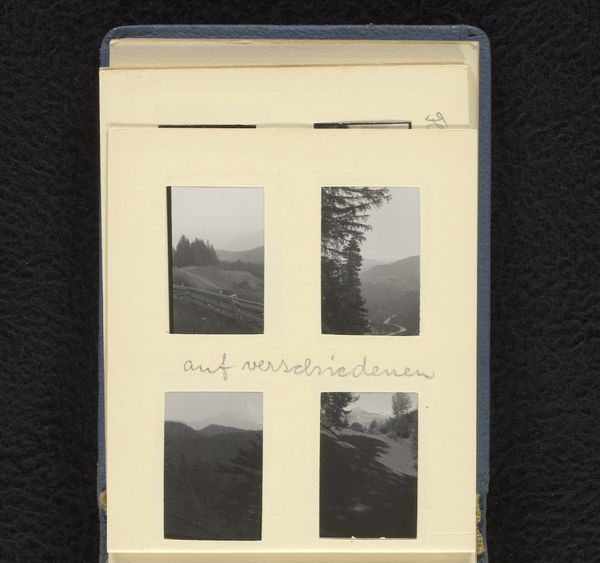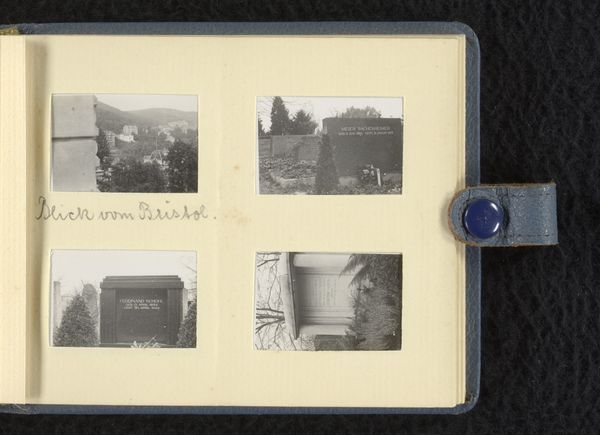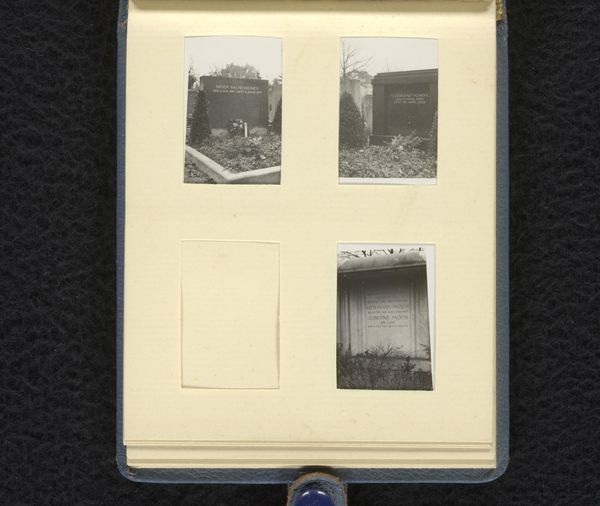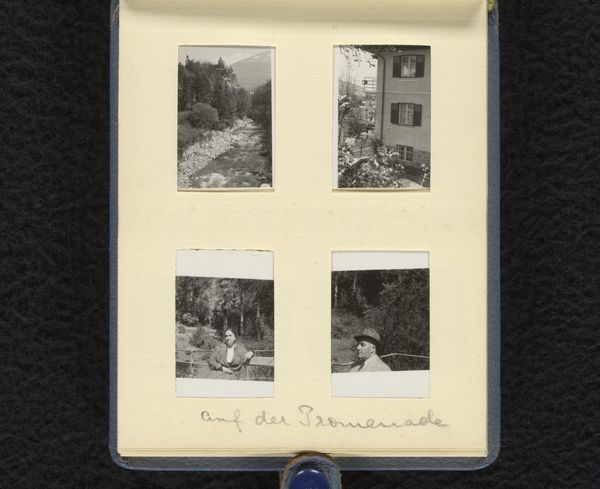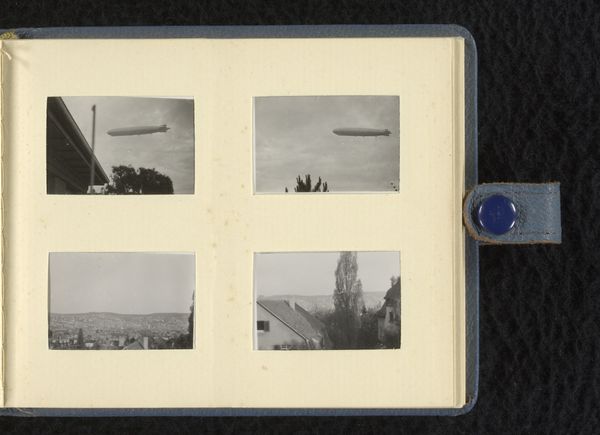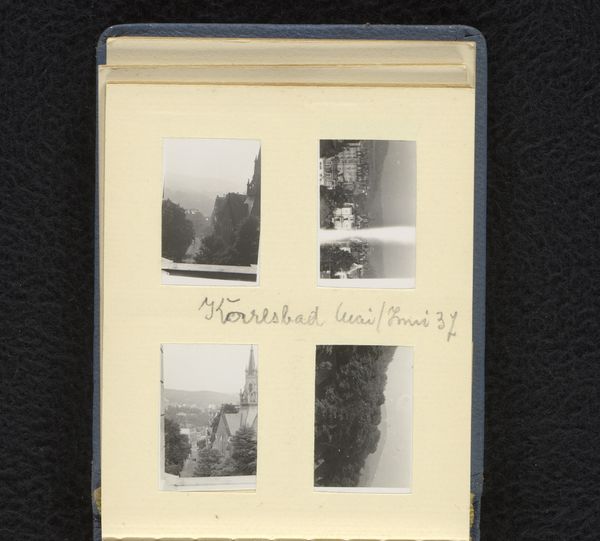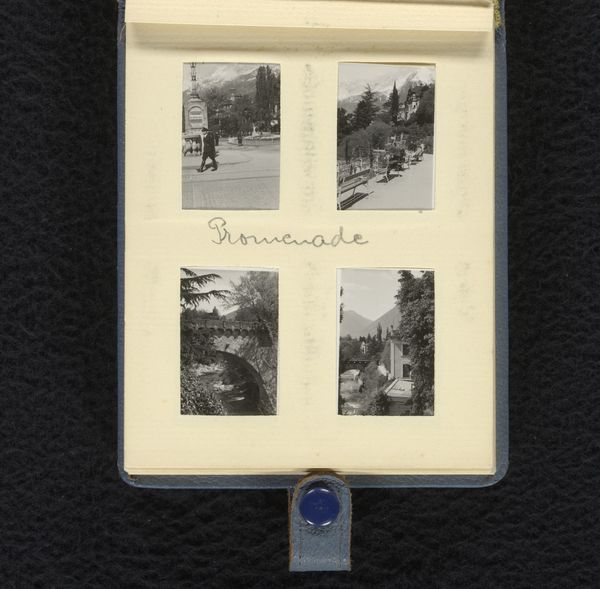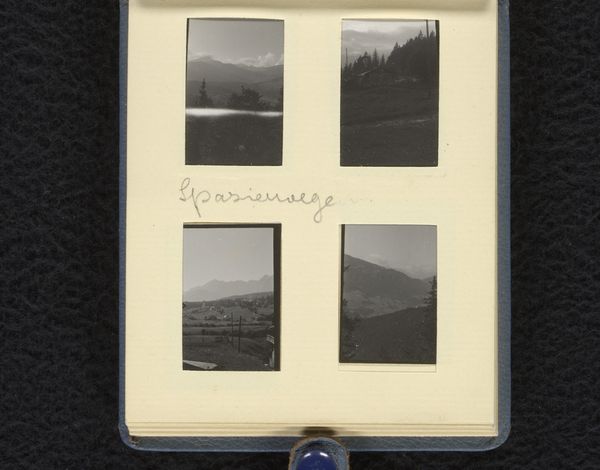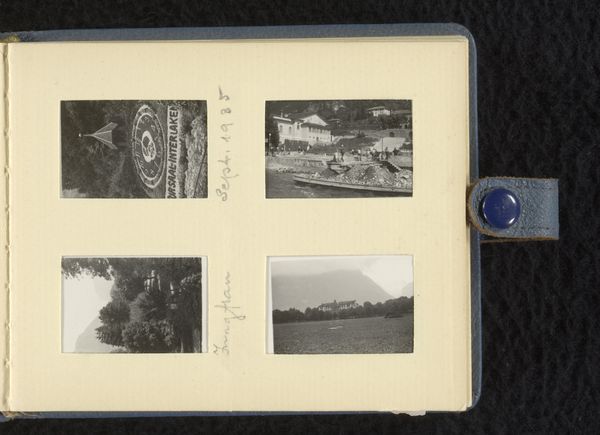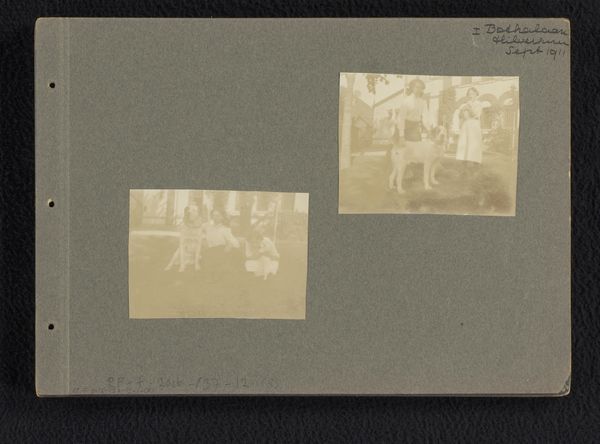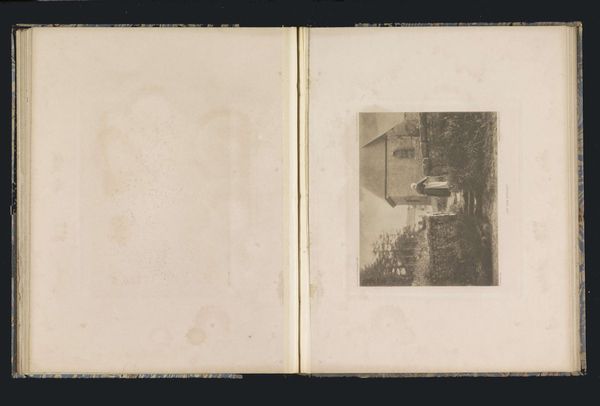
Zwitserse plaatsen Flims-Dorf en Flims-Waldhaus, tijdens een vakantie van de familie Wachenheimer, augustus 1936, Zwitserland 1936 - 1938
0:00
0:00
print, photography, gelatin-silver-print
# print
#
landscape
#
photography
#
framed image
#
gelatin-silver-print
#
framed
#
cutout
Dimensions: height 33 mm, width 44 mm, height 85 mm, width 105 mm
Copyright: Rijks Museum: Open Domain
Editor: We’re looking at a page from the Wachenheimer family album, dating from their vacation in Flims-Dorf and Flims-Waldhaus, Switzerland, in August 1936. These gelatin-silver prints capture little vignettes of the landscape. There’s a nostalgic mood to the piece. What do you see in it? Curator: The compartmentalization immediately strikes me; the rigid framing of each photograph isolates these captured moments. Observe the composition within each frame – the interplay of light and shadow, the careful arrangement of the natural and built environments. The gelatin-silver printing process yields a distinctive tonal range, emphasizing the textures within the landscapes. Editor: The framing within the framing is interesting. The landscapes are picturesque. Why highlight what’s arguably a tourist snapshot in a formal gallery? Curator: The very act of framing elevates the commonplace to the realm of art. These photographs aren't simply documentation, but carefully considered arrangements of visual elements. Consider the varying perspectives, high and low viewpoints. There's a clear attempt to create visually interesting compositions, more than a mere snapshot might reveal. How does the handwritten text function in relation to the images? Editor: I see what you mean! It anchors the scene, giving it context, while simultaneously becoming an aesthetic element in its own right. I suppose the contrast in visual textures —the smooth photographic image versus the personal script—creates tension. It isn't just a picture; it is a framed memory. Curator: Precisely! And that tension, that interplay of elements, is what invites further contemplation and elevates it beyond mere documentation. Through the careful study of composition and materiality, a photograph becomes a narrative. Editor: I had considered this as a series of happy snaps. Looking closely, I recognize a curated viewpoint that suggests intention. Curator: It challenges our assumptions about what constitutes “art,” inviting us to reconsider the visual language present even in the most unassuming objects.
Comments
No comments
Be the first to comment and join the conversation on the ultimate creative platform.
